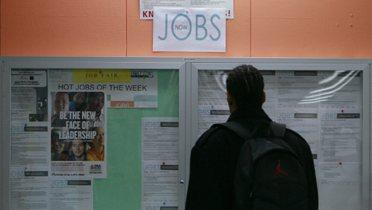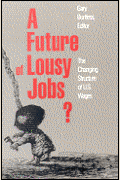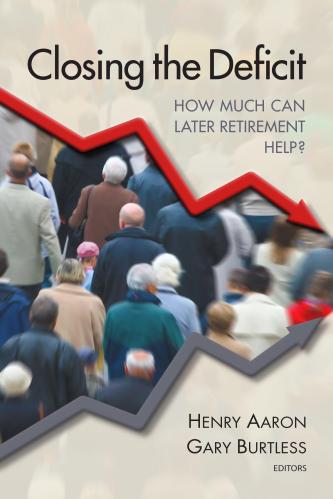Unlike prime-age Americans, who have experienced declines in employment and labor force participation since the onset of the Great Recession, Americans past 60 have seen their employment and labor force participation rates increase.
In order to understand the contrasting labor force developments among the old, on the one hand, and the prime-aged, on the other, this paper develops and analyzes a new data file containing information on monthly labor force changes of adults interviewed in the Current Population Survey (CPS).
The paper documents notable differences among age groups with respect to the changes in labor force transition rates that have occurred over the past two decades. What is crucial for understanding the surprising strength of old-age labor force participation and employment are changes in labor force transition probabilities within and across age groups. The paper identifies several shifts that help account for the increase in old-age employment and labor force participation:
- Like workers in all age groups, workers in older groups saw a surge in monthly transitions from employment to unemployment in the Great Recession.
- Unlike workers in prime-age and younger groups, however, older workers also saw a sizeable decline in exits to nonparticipation during and after the recession. While the surge in exits from employment to unemployment tended to reduce the employment rates of all age groups, the drop in employment exits to nonparticipation among the aged tended to hold up labor force participation rates and employment rates among the elderly compared with the nonelderly. Among the elderly, but not the nonelderly, the exit rate from employment into nonparticipation fell more than the exit rate from employment into unemployment increased.
- The Great Recession and slow recovery from that recession made it harder for the unemployed to transition into employment. Exit rates from unemployment into employment fell sharply in all age groups, old and young.
- In contrast to unemployed workers in younger age groups, the unemployed in the oldest age groups also saw a drop in their exits to nonparticipation. Compared with the nonaged, this tended to help maintain the labor force participation rates of the old.
- Flows from out-of-the-labor-force status into employment have declined for most age groups, but they have declined the least or have actually increased modestly among older nonparticipants.
Some of the favorable trends seen in older age groups are likely to be explained, in part, by the substantial improvement in older Americans’ educational attainment. Better educated older people tend to have lower monthly flows from employment into unemployment and nonparticipation, and they have higher monthly flows from nonparticipant status into employment compared with less educated workers.
The policy implications of the paper are:
- A serious recession inflicts severe and immediate harm on workers and potential workers in all age groups, in the form of layoffs and depressed prospects for finding work.
- Unlike younger age groups, however, workers in older groups have high rates of voluntary exit from employment and the workforce, even when labor markets are strong. Consequently, reduced rates of voluntary exit from employment and the labor force can have an outsize impact on their employment and participation rates.
- The aged, as a whole, can therefore experience rising employment and participation rates even as a minority of aged workers suffer severe harm as a result of permanent job loss at an unexpectedly early age and exceptional difficulty finding a new job.
- Between 2001 and 2015, the old-age employment and participation rates rose, apparently signaling that older workers did not suffer severe harm in the Great Recession.
- Analysis of the gross flow data suggests, however, that the apparent improvements were the combined result of continued declines in age-specific voluntary exit rates, mostly from the ranks of the employed, and worsening reemployment rates among the unemployed. The older workers who suffered involuntary layoffs were more numerous than before the Great Recession, and they found it much harder to get reemployed than laid off workers in years before 2008. The turnover data show that it has proved much harder for these workers to recover from the loss of their late-career job loss.
The Brookings Institution is committed to quality, independence, and impact.
We are supported by a diverse array of funders. In line with our values and policies, each Brookings publication represents the sole views of its author(s).










